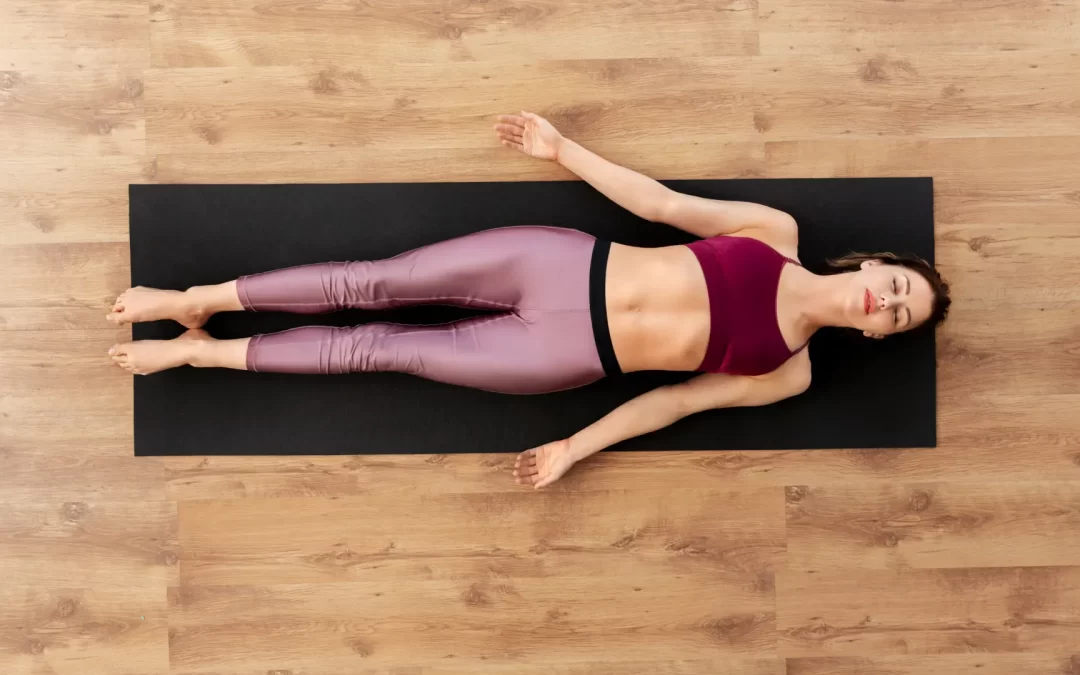What Are the Top Yoga Poses for Better Sleep?
In our fast-paced world, sleep often becomes a casualty of our busy schedules. About 25.7% of Indians, or one in four, suffer from insomnia. Stress, anxiety, and irregular routines contribute to sleepless nights and restless minds. However, a natural and effective remedy for improving sleep quality lies in the ancient practice of yoga. By incorporating specific yoga poses into your daily routine, you can enhance relaxation, reduce stress, and prepare your body and mind for restful sleep. This blog explores the top yoga poses that promote better sleep, offering a holistic approach to achieving a good night’s rest.
The Science Behind Yoga and Sleep
Before delving into specific yoga poses, it’s important to understand how yoga helps in sleep. Online yoga classes for better sleep combine physical postures, breath control, and meditation to create a state of relaxation and balance in the body.

The practice of yoga:
- Reduces Stress and Anxiety: Yoga activates the parasympathetic nervous system, promoting relaxation and reducing the production of stress hormones like cortisol. To clarify all your doubts about how yoga helps alleviate stress, check out our blog, “Can Yoga Help With Stress?“
- Enhances Physical Relaxation: Stretching and holding yoga poses release tension in muscles, promoting physical comfort and ease.
- Improves Circulation: Many yoga poses enhance blood flow, ensuring that your body gets adequate oxygen and nutrients.
- Balances Hormones: Yoga helps regulate hormones like melatonin, which is crucial for maintaining a healthy sleep-wake cycle.
- Calms the Mind: Meditation and breath control practices in yoga quiet the mind, reducing racing thoughts that can hinder sleep.
Top Yoga Poses for Better Sleep
1. Child’s Pose (Balasana)
Description: Child’s Pose is a gentle, restful pose that promotes relaxation and calms the mind.

How to Perform:
- Kneel on the floor with your big toes touching and knees spread apart.
- Sit back on your heels and extend your arms forward, resting your forehead on the ground.
- Breathe deeply and relax your entire body, allowing your back to gently stretch.
Benefits:
- Relieves tension in the back, shoulders, and neck.
- Calms the nervous system.
- Reduces stress and fatigue.
2. Legs Up the Wall (Viparita Karani)
Description: This restorative pose is excellent for reducing stress and promoting relaxation.

How to Perform:
- Sit with your right side against a wall.
- Swing your legs up against the wall as you lower your back to the floor, extending your arms out to the sides.
- Relax in this position for 5-15 minutes, breathing deeply.
Benefits:
- Enhances blood circulation.
- Reduces swelling and fatigue in the legs.
- Calms the nervous system and mind.
3. Corpse Pose (Savasana)
Description: Savasana is typically practiced at the end of a yoga session to promote deep relaxation and integration.
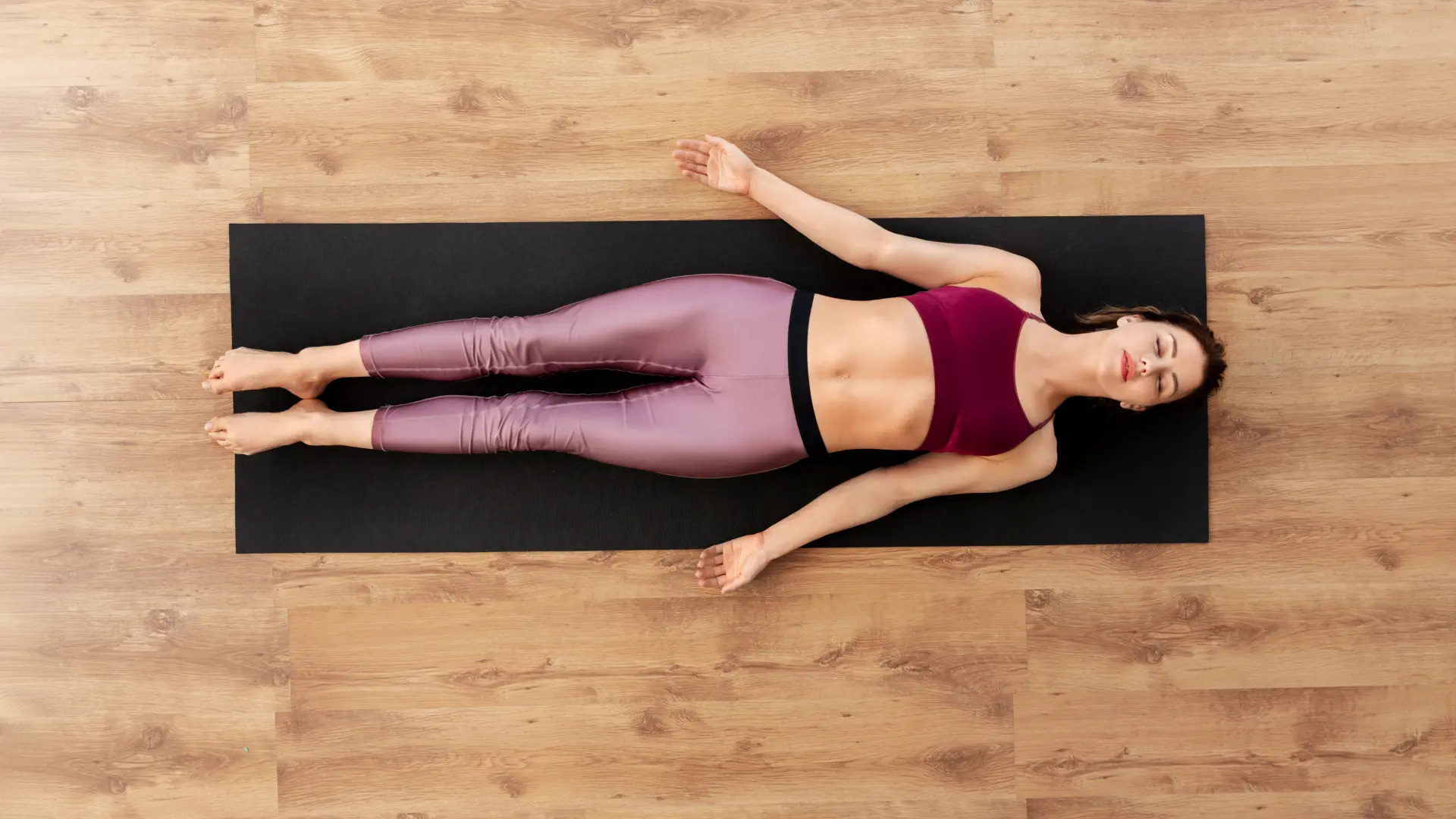
How to Perform:
- Lie flat on your back with your legs comfortably apart and arms resting by your sides, palms facing up.
- Close your eyes and focus on your breath, allowing your body to relax completely.
- Stay in this pose for at least 5-10 minutes.
Benefits:
- Promotes deep relaxation.
- Reduces stress and anxiety.
- Helps in transitioning to sleep.
4. Reclining Bound Angle Pose (Supta Baddha Konasana)
Description: This pose opens the hips and chest, promoting relaxation and reducing stress.
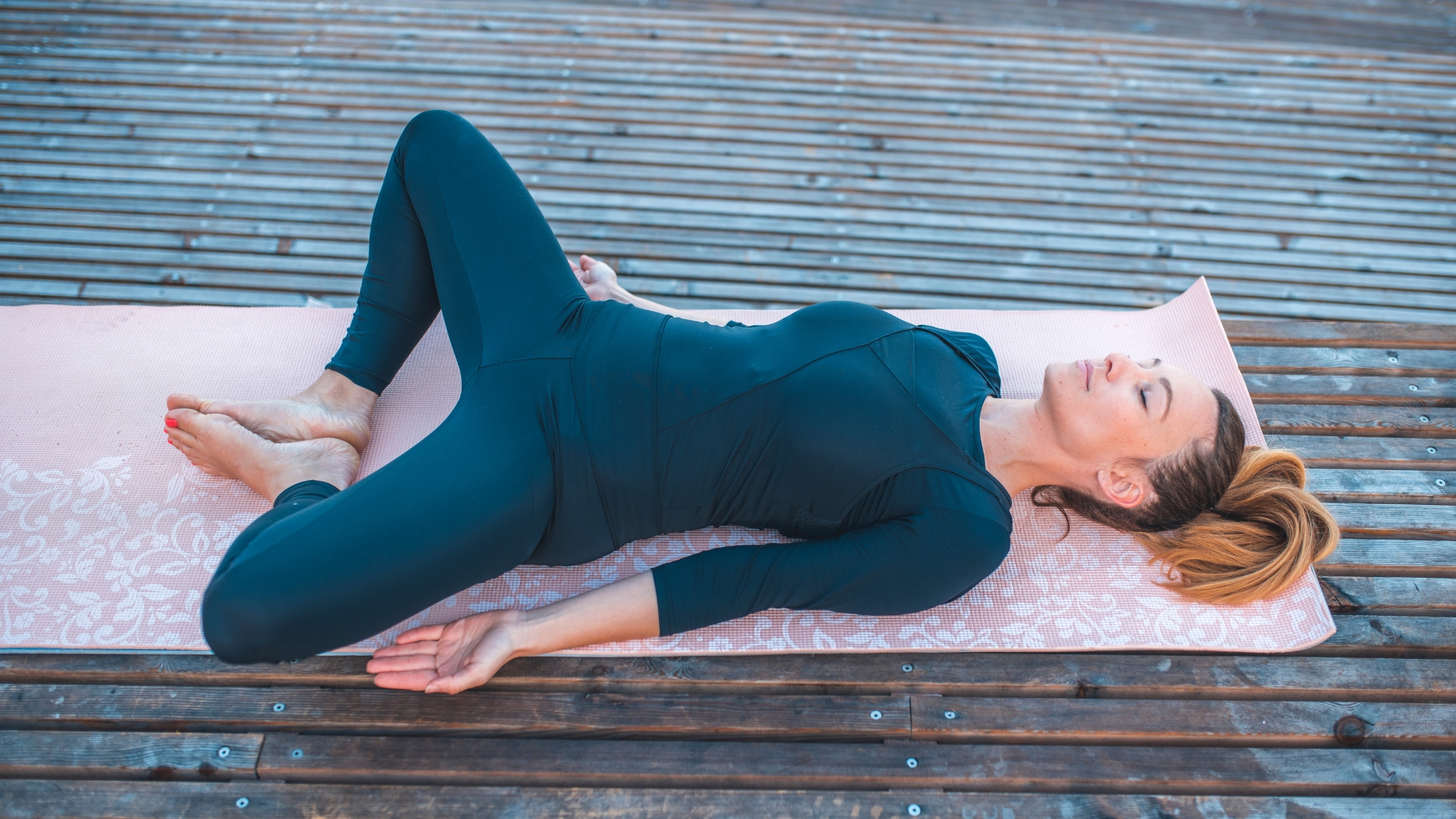
How to Perform:
- Lie on your back and bring the soles of your feet together, allowing your knees to fall open to the sides.
- Place pillows or blankets under your knees for support if needed.
- Rest your arms by your sides and breathe deeply, focusing on releasing tension.
Benefits:
- Opens the hips and chest.
- Reduces stress and promotes relaxation.
- Helps alleviate symptoms of anxiety.
5. Standing Forward Bend (Uttanasana)
Description: A forward bend that stretches the hamstrings and calms the mind.
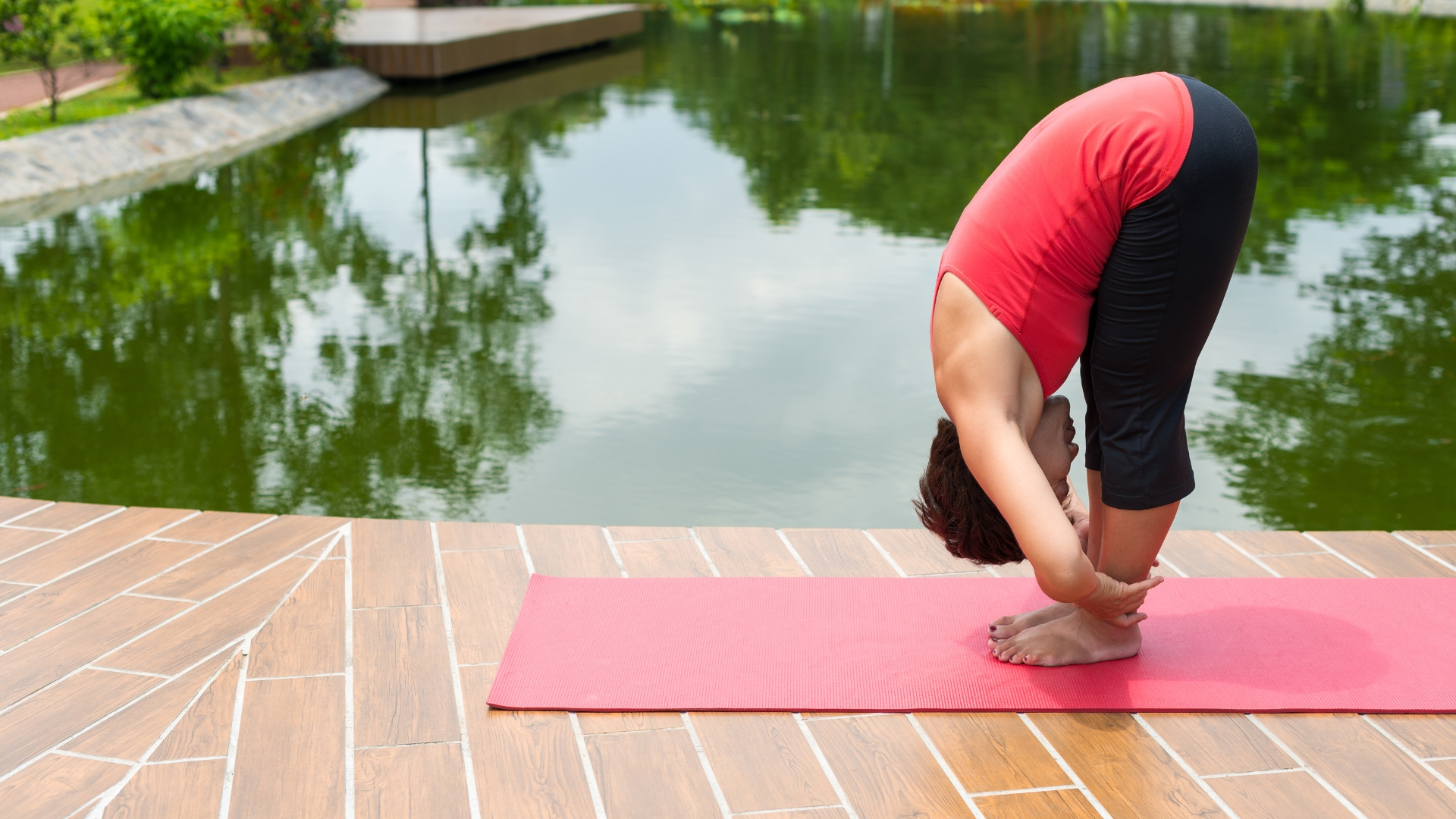
How to Perform:
- Stand with your feet hip-width apart.
- Hinge at your hips and fold forward, letting your head and arms hang down.
- Hold your elbows and gently sway from side to side if it feels good.
- Stay in this pose for a few breaths, then slowly rise back up.
Benefits:
- Stretches the hamstrings and lower back.
- Calms the mind and relieves stress.
- Helps in alleviating insomnia.
6. Cat-Cow Pose (Marjaryasana-Bitilasana)
Description: A gentle flow between two poses that warms the body and brings flexibility to the spine.
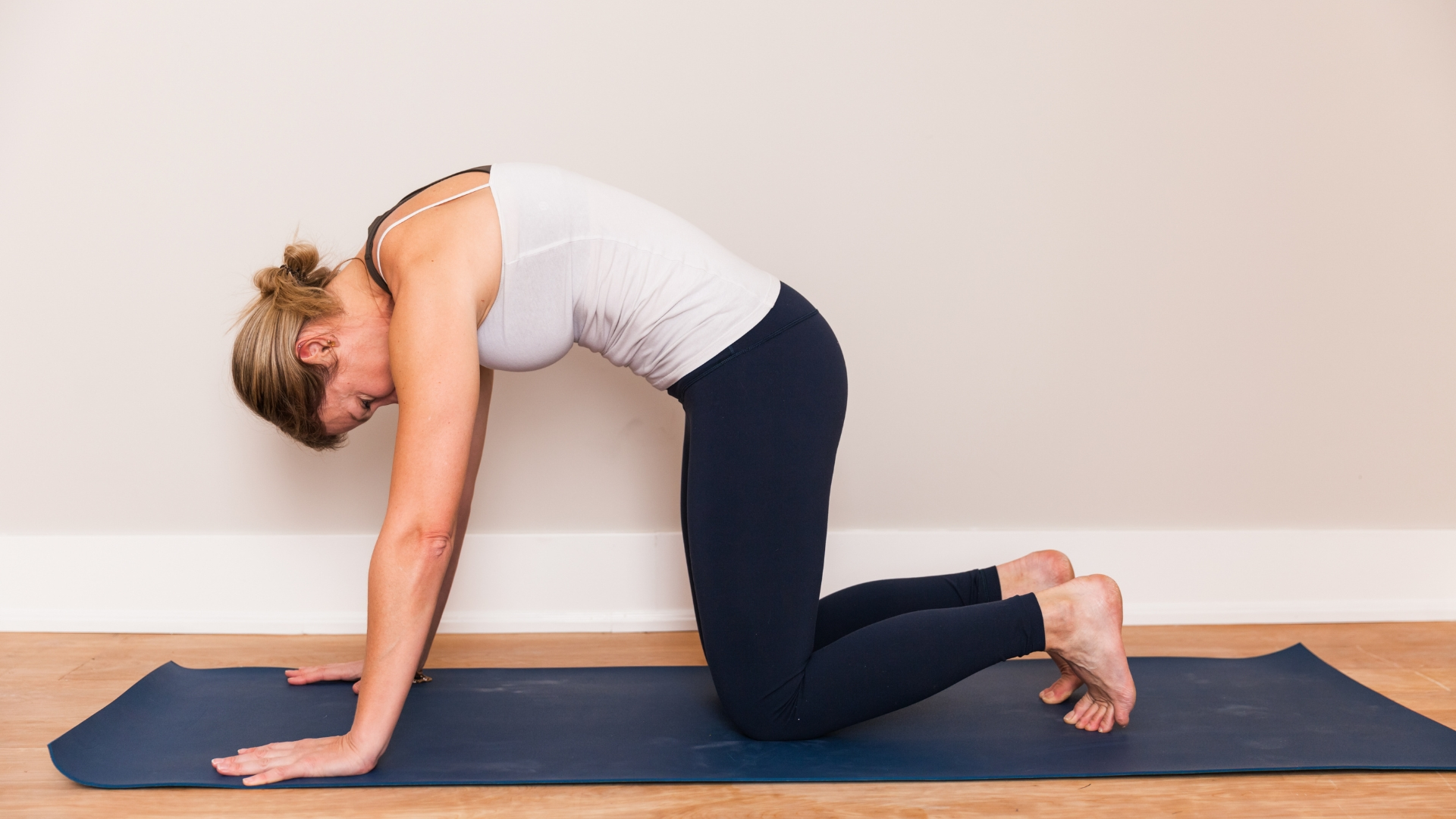
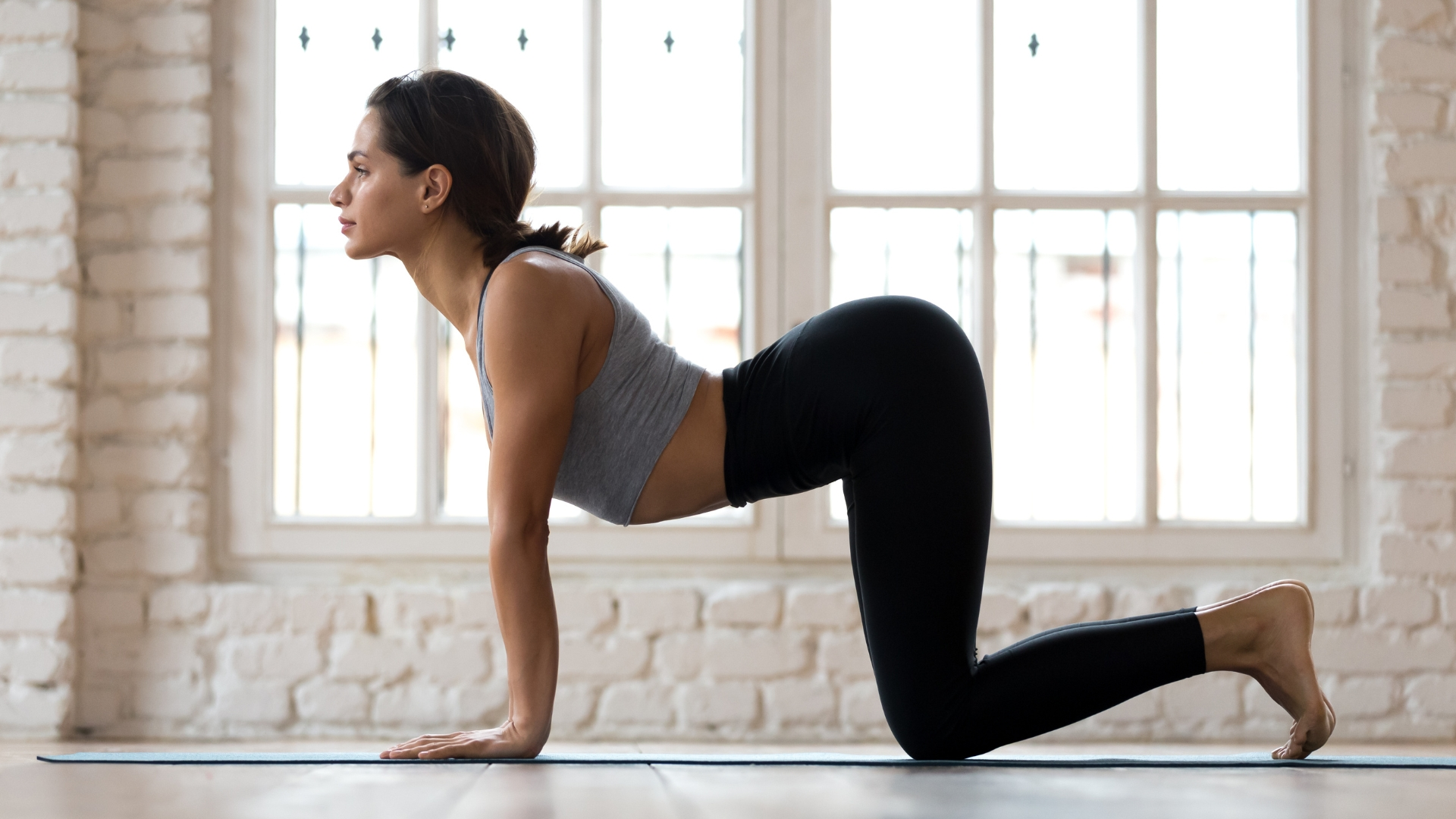
How to Perform:
- Start on your hands and knees in a tabletop position.
- Inhale, arch your back and lift your head and tailbone towards the ceiling (Cow Pose).
- Exhale, round your spine, tucking your chin to your chest (Cat Pose).
- Continue flowing between these two poses for a few minutes.
Benefits:
- Promotes spinal flexibility.
- Massages and stimulates organs in the belly.
- Reduces stress and calms the mind.
7. Seated Forward Bend (Paschimottanasana)
Description: A seated stretch that relaxes the body and mind, promoting a sense of calm.
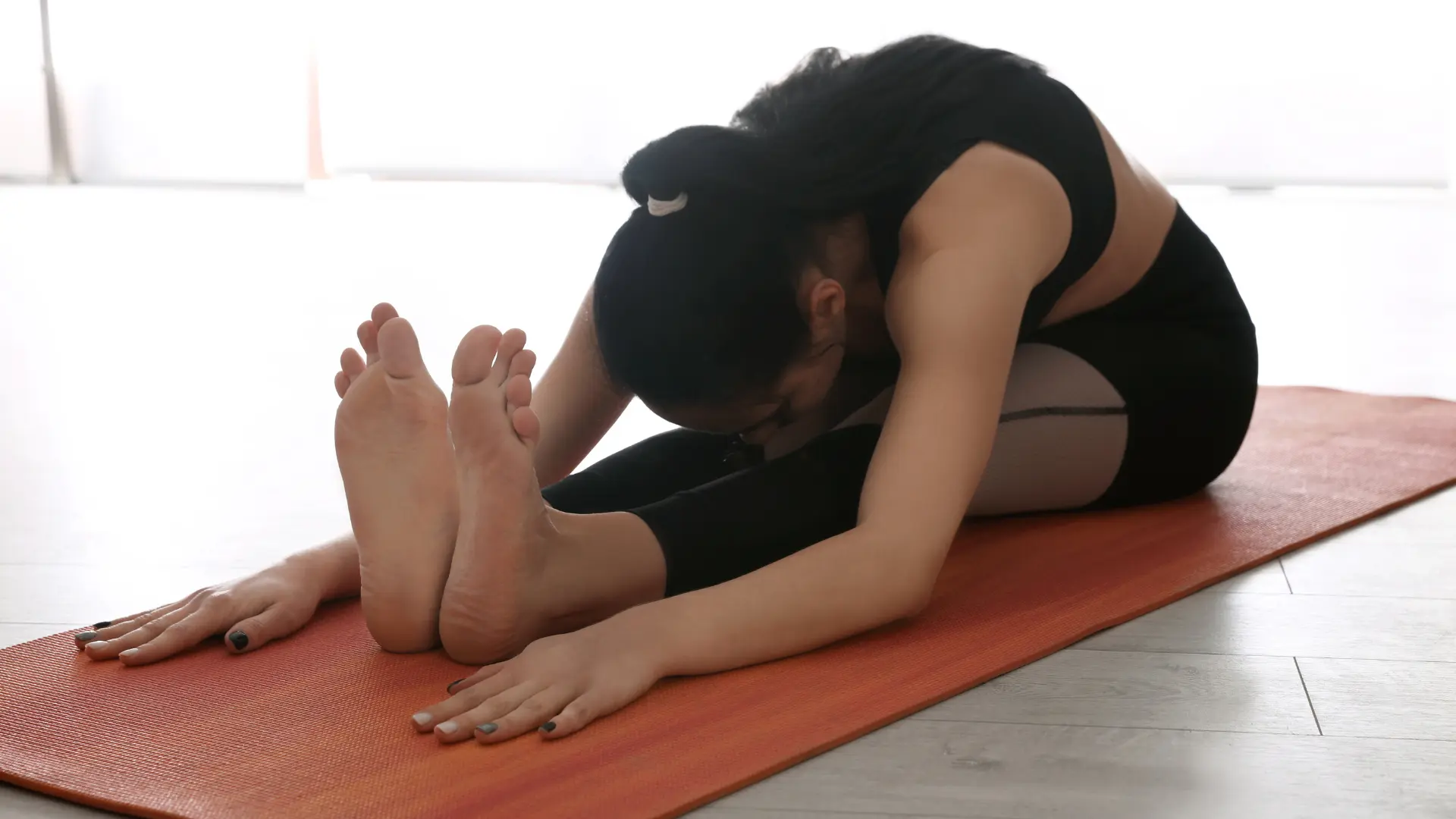
How to Perform:
- Sit on the floor with your legs extended straight in front of you.
- Inhale, lengthen your spine, and as you exhale, fold forward from your hips, reaching for your feet or shins.
- Hold this pose for a few breaths, then slowly rise back up.
Benefits:
- Stretches the hamstrings and lower back.
- Calms the mind and reduces anxiety.
- Promotes relaxation and prepares the body for sleep.
8. Supine Spinal Twist (Supta Matsyendrasana)
Description: A gentle twist that relieves tension in the spine and promotes relaxation.

How to Perform:
- Lie on your back with your knees bent and feet flat on the floor.
- Extend your arms out to the sides in a T-shape.
- Drop your knees to one side, keeping your shoulders grounded.
- Hold this position for a few breaths, then switch sides.
Benefits:
- Relieves tension in the spine and lower back.
- Promotes detoxification.
- Calms the nervous system and aids in relaxation.
Integrating Yoga into Your Nighttime Routine
To maximize the benefits of yoga for sleep, consider integrating these poses into a nightly routine. Here are some tips:
- Create a Calm Environment: Find a quiet, dimly lit space free from distractions.
- Set a Consistent Time: Practice yoga at the same time each night to signal to your body that it’s time to wind down.
- Focus on Breath: Pay attention to your breath, taking slow, deep inhales and exhales to calm the mind.
- Use Props: Utilize pillows, blankets, and blocks for support and comfort in each pose.
- End with Meditation: Conclude your practice with a few minutes of meditation or deep breathing to further relax your mind.
Additional Tips for Better Sleep
While online yoga classes can significantly improve your sleep quality, combining it with other healthy sleep habits can enhance its effectiveness. Consider these additional tips:
- Maintain a Sleep Schedule: Go to bed and wake up at the same time every day, even on weekends.
- Create a Bedtime Routine: Establish a relaxing pre-sleep routine, such as reading a book or taking a warm bath.
- Limit Screen Time: Avoid electronic devices at least an hour before bed to reduce blue light exposure.
- Watch Your Diet: Avoid large meals, caffeine, and alcohol close to bedtime.
- Keep Your Bedroom Cool and Dark: A cool, dark, and quiet environment promotes better sleep.
Conclusion
Incorporating yoga into your daily routine can be a transformative step toward achieving better sleep. By practicing poses like Child’s Pose, Legs Up the Wall, and Corpse Pose, you can reduce stress, calm your mind, and prepare your body for restful slumber. Remember to be consistent and patient with your practice, as the benefits of yoga for sleep may become more pronounced over time. Embrace this ancient practice, and pave the way for a healthier, more peaceful night’s sleep.
Inquiry
If you have any questions, please feel free to reach out. We’ll be glad to help!

